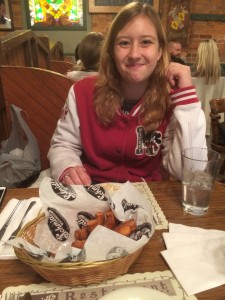I think the highlight of my ENR experience over these past two years is really the fact that I have been able to meet so many lovely and like-minded people with which to share this experience. Going to numerous events, meetings, and living with other ENR Scholars has been the most rewarding thing of all. Really, the greatest thing I have gained from this experience is a variety of connections, friendships, and a far easier transition into college life than I could have hoped. Some of the greatest friends I have made so far at OSU are scholars. There is always someone who I have a class with or will see on Ag Campus; someone I can always say hi to around Columbus or chat between classes. I have learned how to better connect with my peers through Scholars, and I appreciate that very much.
Similar to learning from ENR Scholars, I have learned a lot of new ways to reduce my environmental impact through other scholars, and I have started to incorporate habits I have learned into my own daily life. One big thing I’ve started to change is reducing my physical impact and waste by looking into the zero-waste/low-impact movement. I bring reusable bags everywhere now and I’m developing a kit I can take when I get food. I am much more confident in spreading my environmental values because of all the great people I have interacted with and learned from in ENR Scholars. Also, though I was vegetarian before joining ENR Scholars, I am working to eat a more vegan diet and take comfort in the fact that I know so many people who are eating similarly to help the environment. I am taking all of these skills and more off campus with me next year: my roommate is vegan, and we will be cooking at home, so I can already bring my habits into the kitchen. I will be bringing my car down, but I want to bike or take the bus when possible, and I want to continue to reduce unneccesary waste in my life.
My advice to the incoming ENR Scholars is to go to any event you can and immediately start making connections with people. Also, LISTEN to what your peers and instructors are saying because you will learn so much that way. Truly being involved in ENR Scholars is the best way to get the most out of it, and I am sincerely glad I was able to do that for my first two years at OSU.











